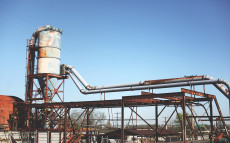- pathfindersAI
- Job Profile
Tire Builders
Summary
Tire Builders: An In-Depth Career Analysis
As a career navigator at a state college, it is my pleasure to introduce you to the specialized and dynamic profession of Tire Builders. This occupation is critical to the manufacturing and automotive industries, providing the essential components that keep vehicles on the road. Through this comprehensive essay, we will explore what tire builders do, their job responsibilities, the essential skills required, educational pathways, and career prospects, culminating in a thoughtful conclusion on this unique profession.
What They Do
Tire builders play a pivotal role in the production of tires, ensuring that they meet the stringent quality and safety standards required for vehicles. This profession involves the meticulous assembly of various tire components, including the tread, ply, and sidewalls, into a cohesive and functional product. By operating specialized machinery, tire builders combine these elements through processes like vulcanization and curing. While the work is often performed in a factory setting, it requires a keen eye for detail and a thorough understanding of tire construction.
Job Responsibilities
The responsibilities of a tire builder are multifaceted and demanding. Primary duties include operating tire-building machines, monitoring the assembly process for consistency and precision, and ensuring that each tire adheres to manufacturer specifications. Tire builders must frequently inspect materials for defects, cut and shape rubber components, and properly align layers to achieve optimal performance and durability. Additionally, they are responsible for maintaining and troubleshooting equipment, as well as adhering to safety protocols to prevent workplace accidents. Documentation and quality control checks are also integral parts of their daily activities to ensure continued excellence in production.
Essential Skills
A successful tire builder must possess a blend of technical and soft skills. Mechanical aptitude is paramount, as the role involves working with complex machinery and understanding the intricacies of tire construction. Precision and attention to detail are crucial for ensuring that every tire meets strict quality standards. Physical stamina and dexterity are necessary due to the hands-on nature of the work and the repetitive motions involved. Problem-solving skills and the ability to work well under pressure are also essential, as unforeseen issues can arise during the manufacturing process. Finally, strong communication skills are important for collaborating with team members and reporting any discrepancies or malfunctions.
Educational Pathways
Becoming a tire builder typically requires a high school diploma or equivalent, with a strong emphasis on coursework in mathematics, mechanical drawing, and physical sciences. While specific post-secondary education is not always mandatory, vocational training programs that focus on manufacturing, automotive technology, or mechanical skills can provide a significant advantage. Many employers offer on-the-job training to teach new hires the technical aspects of tire building, including machine operation and safety procedures. Additionally, apprenticeships or certification programs, such as those offered by trade schools or community colleges, can enhance one’s credentials and increase job opportunities.
Career Prospects
The demand for tire builders is driven by the continued growth of the automotive industry and the ongoing need for replacement tires. As vehicles become more advanced, the role of a tire builder will likely evolve, necessitating continuous learning and adaptation to new technologies. Career advancement opportunities exist, including supervisory roles, quality control positions, and specialized technical roles within manufacturing plants. Tire builders may also find prospects in related fields such as automotive repair, manufacturing engineering, or equipment maintenance. With experience and further education, some may transition into roles focused on design, research, or management within the broader automotive industry.
Conclusion
In conclusion, the profession of a tire builder is both challenging and rewarding, offering a unique blend of technical skill and hands-on craftsmanship. This essay has provided an in-depth look at the essential aspects of the job, illuminating the critical responsibilities, necessary skills, and viable educational pathways. The career prospects for tire builders remain robust, with ample opportunities for growth and advancement. For those with a passion for precision and an interest in the automotive world, tire building presents a fulfilling and vital career path.
Video
Compensation
| State | Median Salary | Median Hourly | Positions |
|---|---|---|---|
| AL | * | * | 1,090 |
| CA | 46,780 | 22.49 | 270 |
| GA | 44,790 | 21.53 | 920 |
| IL | 51,870 | 24.94 | 1,450 |
| IN | 67,510 | 32.46 | 660 |
| IA | * | * | 710 |
| KY | 38,330 | 18.43 | 290 |
| ME | 39,140 | 18.82 | 40 |
| MD | 35,880 | 17.25 | 50 |
| MI | 38,850 | 18.68 | 90 |
| MS | 48,720 | 23.43 | 710 |
| MO | 35,620 | 17.13 | 140 |
| NC | 58,360 | 28.06 | 3,010 |
| OH | 37,060 | 17.82 | 210 |
| OR | 45,930 | 22.08 | 140 |
| PA | 40,980 | 19.70 | 370 |
| SC | 59,140 | 28.44 | 4,220 |
| SD | 37,960 | 18.25 | 30 |
| TN | 57,460 | 27.63 | 1,020 |
| VA | 61,140 | 29.40 | 840 |
Similar Occupations
In this area you will find other occupations that are close to the one you were viewing in tasks, knowledge and work environment. If the primary job profile you are viewing isn't quite to your liking, take a look around and see what else is available.
Basic and Premium Accounts have more alternative occupations available than the Free account.

Automotive Body and Related Repairers - 49-3021.00
Automotive Body and Related Repairers restore the structural integrity and appearance of vehicles by repairing, replacing, and refinishing damaged car frames and body panels. They use specialized tools and techniques to bring vehicles back to their pre-accident condition, ensuring both functionality and visual appeal.
-
$48,740/yr
Median Pay -
151,910
Number of Jobs

Coating, Painting, and Spraying Machine Setters, Operators, and Tenders - 51-9124.00
Coating, Painting, and Spraying Machine Setters, Operators, and Tenders set up, operate, or tend machines that coat or paint a variety of products. They ensure the uniform application of coatings or paints, perform quality control checks, and maintain equipment to ensure efficient production.
-
$45,560/yr
Median Pay -
155,880
Number of Jobs